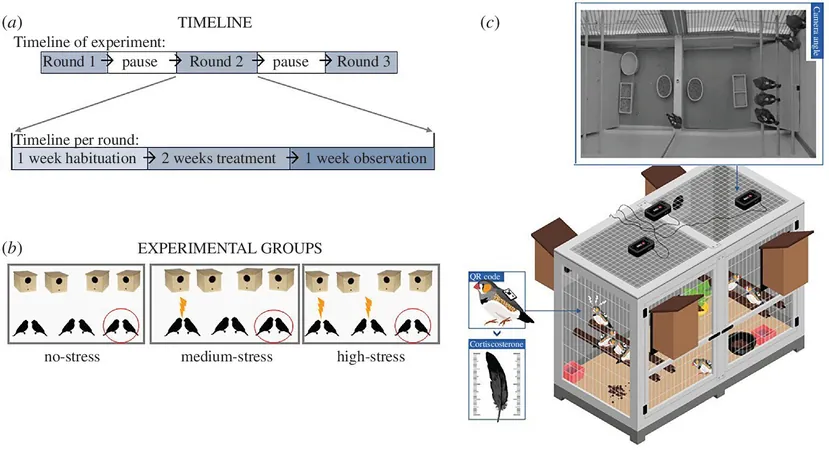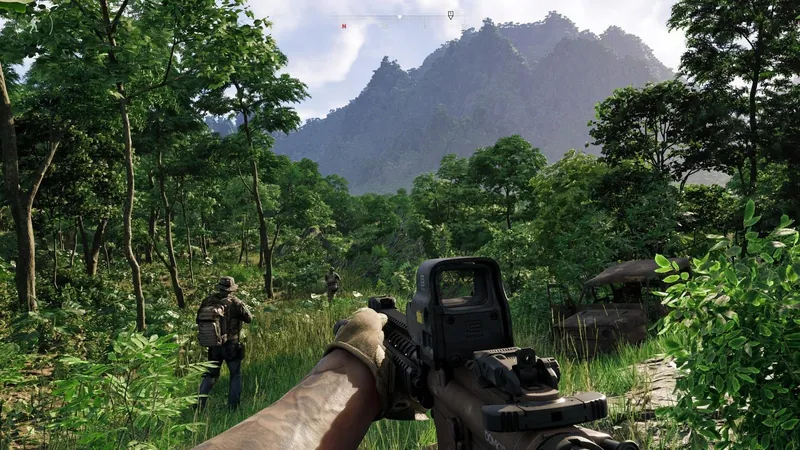
Unraveling the Truth: Is Animal Stress Contagious? Shocking New Findings!
2024-11-13
Author: Michael
Recent research has revealed a startling truth: stress isn't just a human experience; it can spread like wildfire among animals too! As urbanization and climate change alter natural habitats at an unprecedented pace, animals are increasingly exposed to numerous stressors—from habitat loss to human encroachment. While the impact of stress on individual animals has been studied, little attention was paid to how one individual’s stress could influence the rest of the group—until now!
A groundbreaking study led by behavioral biologist Hanja Brandl from the Cluster of Excellence Collective Behavior at the University of Konstanz, alongside her colleague Damien Farine from the Australian National University, explored this intriguing phenomenon using zebra finches. Their findings are published in the esteemed journal *Proceedings of the Royal Society B: Biological Sciences*, and the results are turning heads in the scientific community.
Over the course of three rigorous four-week experiments involving 96 zebra finches, researchers subjected certain birds to stress-inducing conditions while employing high-definition cameras to meticulously record the behavioral changes. Astonishingly, they found that stress responses not only affected the exposed individuals but also had a ripple effect on the unexposed members of the group.
The Contagious Nature of Stress
"Our experiments demonstrate that stress responses can permeate through social groups, impacting even those who have not directly experienced any stressors," Brandl reveals. Notably, the more birds that were stressed in the group, the stronger these effects were.
Interestingly, the researchers noted a significant decrease in activity levels among unexposed birds in stressed groups. This behavior suggests they were less inclined to explore their surroundings, potentially jeopardizing their access to crucial resources in the wild—a dangerous outcome for survival!
Additionally, social dynamics within the groups were altered. Birds that had not been exposed to stress maintained fewer social bonds, relying heavily on pre-existing relationships rather than expanding their social networks. "This indicates that a group’s stress level can undermine its social cohesion, which may further amplify the risk of stress spread within the group," cautions Farine.
Why This Matters for Wildlife Conservation
Understanding the contagion of stress in animal groups is not merely an academic curiosity; it has profound implications for wildlife conservation. As stress can significantly diminish social connections and resource availability, conservationists may need to consider group dynamics when developing strategies to protect vulnerable animal populations.
As the effects of climate change and urbanization continue to intensify, recognizing that stress can negatively impact animal behavior and social structures is more vital than ever. This research opens the door to further investigations, leaving one to wonder: how can we mitigate these stressors and protect not only individual animals but also the intricate social networks that support them?
Stay tuned, because the conversation about animal stress and its consequences is far from over!









 Brasil (PT)
Brasil (PT)
 Canada (EN)
Canada (EN)
 Chile (ES)
Chile (ES)
 España (ES)
España (ES)
 France (FR)
France (FR)
 Hong Kong (EN)
Hong Kong (EN)
 Italia (IT)
Italia (IT)
 日本 (JA)
日本 (JA)
 Magyarország (HU)
Magyarország (HU)
 Norge (NO)
Norge (NO)
 Polska (PL)
Polska (PL)
 Schweiz (DE)
Schweiz (DE)
 Singapore (EN)
Singapore (EN)
 Sverige (SV)
Sverige (SV)
 Suomi (FI)
Suomi (FI)
 Türkiye (TR)
Türkiye (TR)